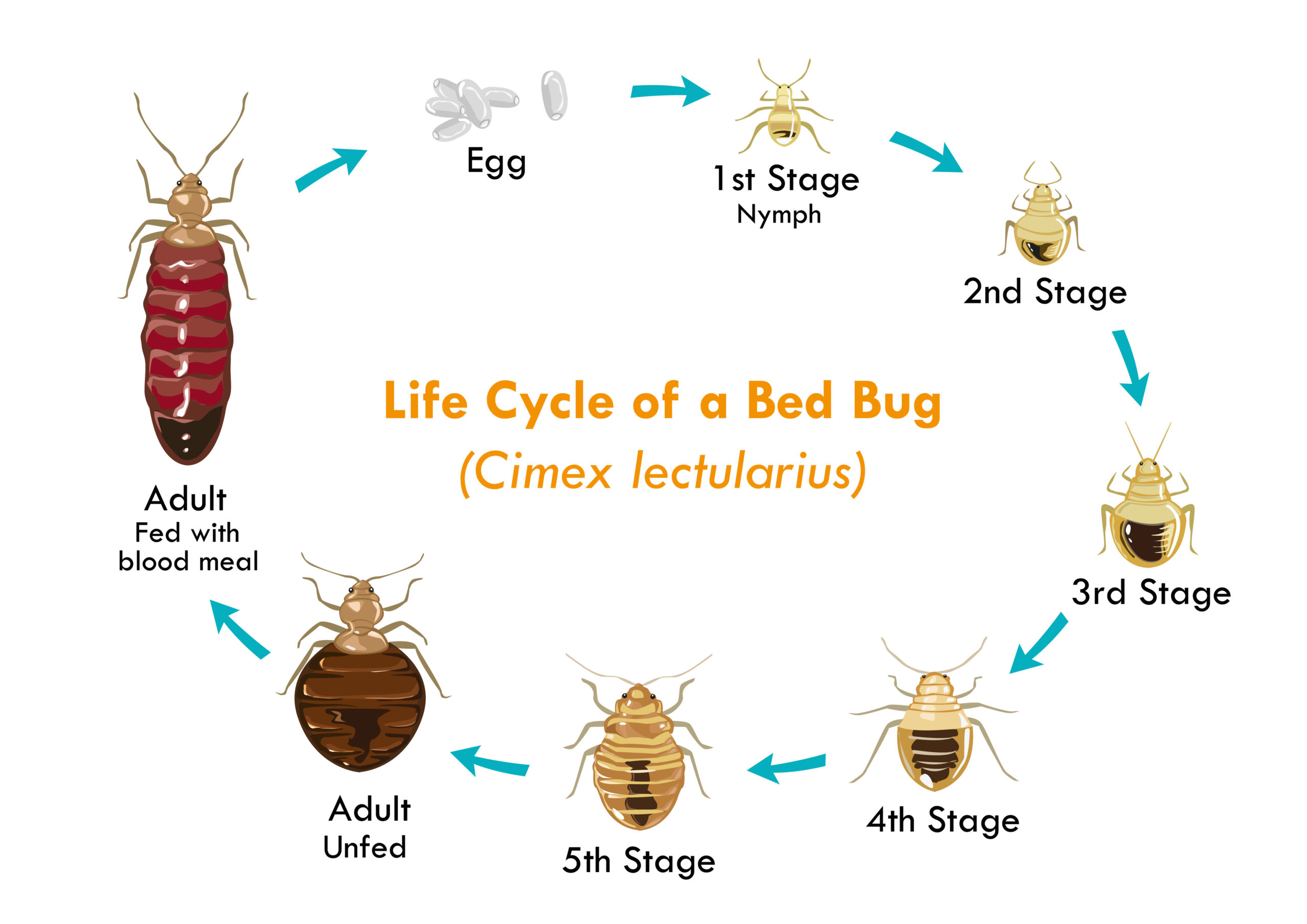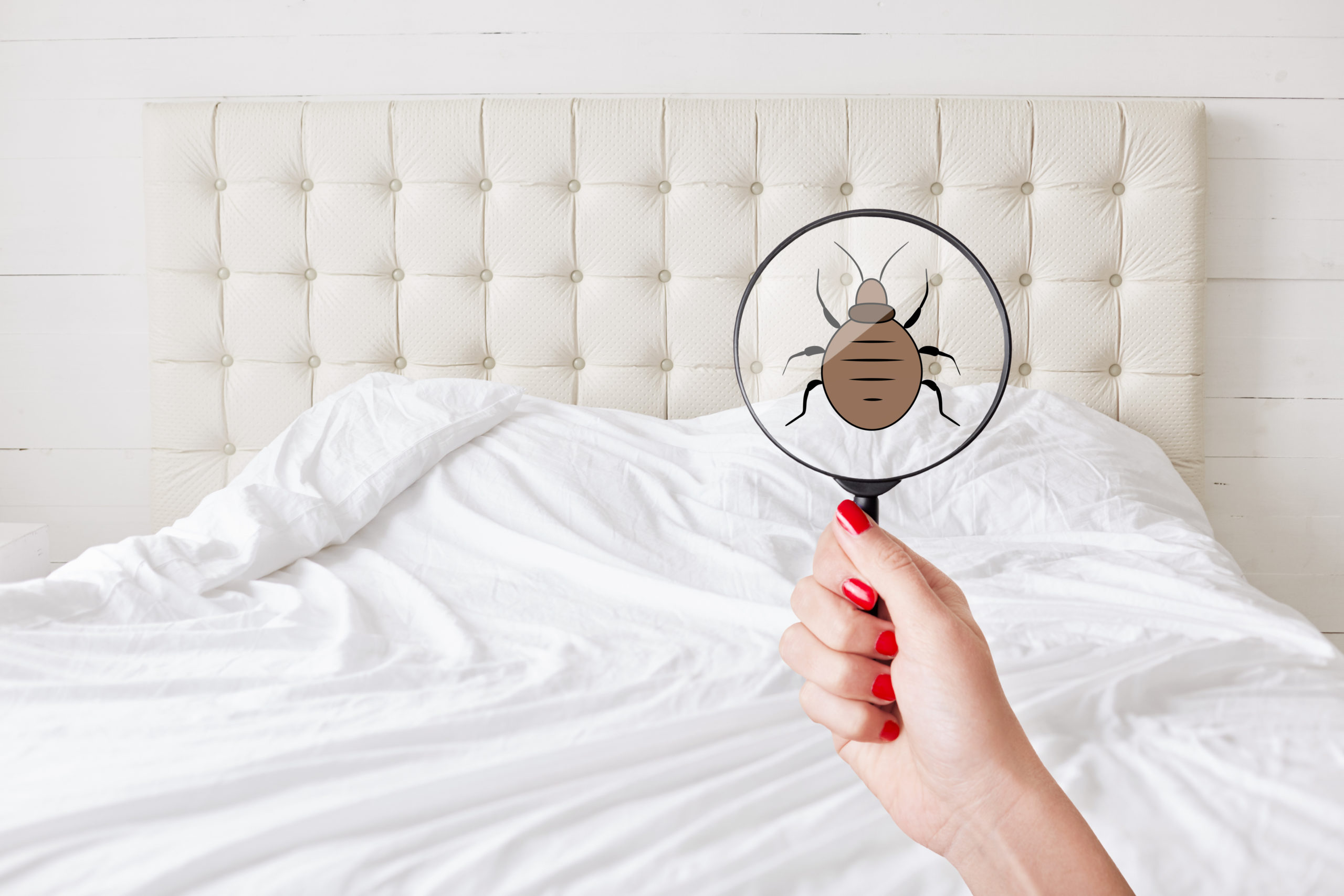If you’ve heard horror stories about bed bug infestations and ever wondered if they were true, we can confidently say they are. Not only are those stories likely true, but the reality of a bed bug may be even more serious than your worst nightmare. All it takes is one pregnant female bed bug to infest your home with over 300 adult bed bugs and, within three months, over 1,000 new eggs. But what do bed bugs look like? How can you identify them?
Bed bug infestations are notoriously difficult to control but before you even get to the point of taking action, you need to confirm that you are, in fact, dealing with bed bugs. Here’s what you need to know about identifying bed bugs in your home.
What Is a Bed Bug?
A bed bug is a small insect that belongs to the genus Cimex. Though they don’t carry disease like ticks and fleas, bed bug bites have been known to trigger allergic reactions and may cause skin rashes. Anywhere from several minutes to several days after a bite, the skin generally becomes itchy.
The bed bugs that typically feed on humans belong to one of two species:
- Cimex lectularius (common bed bug)
- Cimex hemipterus (tropical bed bug)
Bed bugs have been associated with humans for over 3,000 years. They get their name from their habit of taking up residence in beds and feeding on human hosts while they sleep. Bed bugs can’t fly, but they can move very quickly over flat surfaces and they are talented “hitchhikers.”
What Do Bed Bugs Look Like?
A bed bug is a small, brown, oval-shaped insect that feeds on the blood of humans or animals. An adult bed bug typically has a flat body and is roughly the size of a small apple seed, about 4 to 5 mm long. As they feed, however, adult bed bugs swell with blood and turn a reddish color.
Bed bug nymphs go through five distinct life stages before they become sexually mature adults. At each stage of life, the nymph needs at least one blood meal to move on to the next phase of development – they also shed their skins at each stage to accommodate for new growth.
Bed bug eggs are very small – about the size of a pinhead – and they are white in color. A newly hatched bed bug nymph is translucent and light brown in color but becomes darker with each new stage of development. Because they are similar in appearance, bed bugs are often mistaken for other small insects like carpet beetles, booklice, and small cockroaches.
How Quickly Do Bed Bugs Reproduce?

A female common bed bug has the capacity to lay anywhere from 1 to 10 eggs per day and up to 500 eggs over their lifetime. Tropical bed bugs are less prolific breeders, producing an average of 50 eggs over their lifetime. All it takes is a handful of sexually mature adult bed bugs to produce a full-scale infestation of 13,000 bed bugs or more over a six-month period.
In order to continue mating and reproducing, adult bed bugs (both male and female) must feed at least once every two weeks. Under favorable conditions, the life cycle from egg to egg-producing adult takes about 4 to 5 weeks. Preventing bed bugs from feeding at any point in the life cycle is your best bet for getting a bed bug infestation under control.
What Causes a Bed Bug Infestation?
Though it may seem like bed bug infestation is a sign of poor hygiene, it isn’t typically the main factor. Bed bugs are typically transferred from one place to another in the bedding or other personal items of the people they are feeding on.
Here are some of the risk factors for bed bug infestation:
- Adult bed bugs or eggs transferred from an infested dwelling via clothing or bedding
- Close proximity of infested dwellings – easy travel through air ducts, for example
- Infested items (like furniture or clothing) being transferred to a home or business
- Wild animals harboring bed bugs can transfer them to a dwelling
- People visiting an infested area and carrying bed bugs to another location
While bed bugs will feed on pets when given the opportunity, they don’t usually live or travel on the skin of animal hosts. Pest control experts do not believe pets are a factor in the spread of bed bugs.
Frequently Asked Questions
How many kinds of bed bugs are there?
There are roughly 90 different species of bed bugs, though only three are known to feed on humans. The common bed bug (Cimex lectularius) is the most common in the United States while C. hemipterus is found in tropical regions. A third species, L. boueti, is only found in South America and West Africa.
How big are bed bugs?
Bed bug eggs are roughly the size of a pinhead and newly hatched nymphs are only slightly larger. As they move through the five stages of development, nymphs shed their exoskeletons and grow to an adult size between 4 and 5 mm, about the size of an apple seed.
How many eggs does a bed bug lay?
Bed bug reproduction varies by species. A female common bed bug can lay up to 10 eggs per day or 100 to 500 eggs over the course of its lifetime. Tropical bed bugs only produce about 50 eggs in their lifetime.

